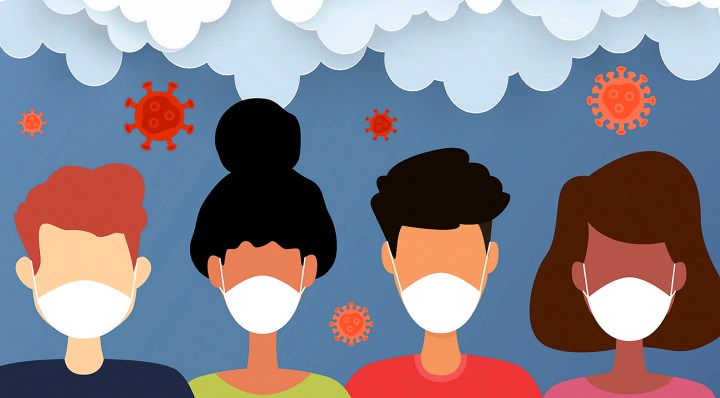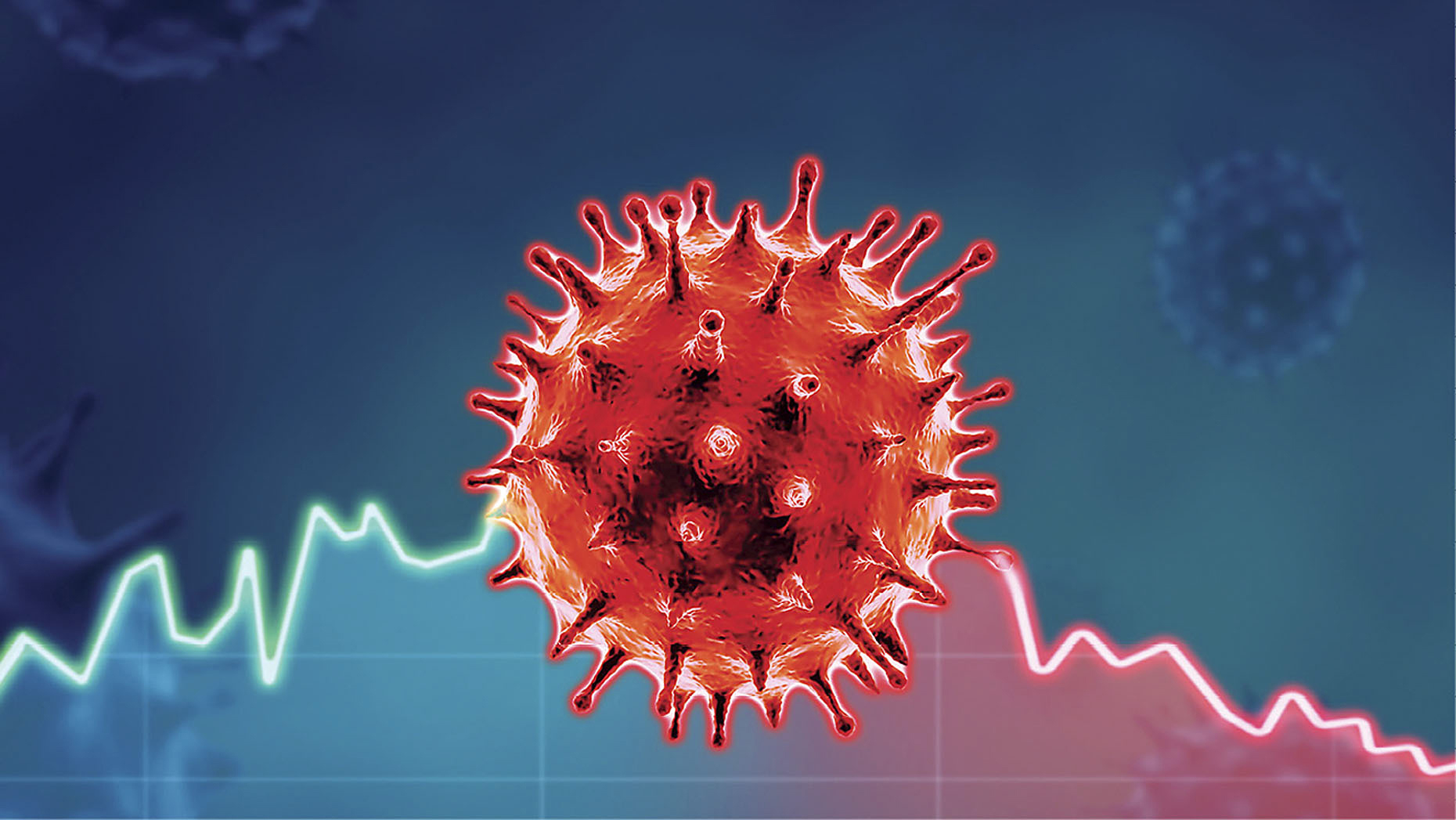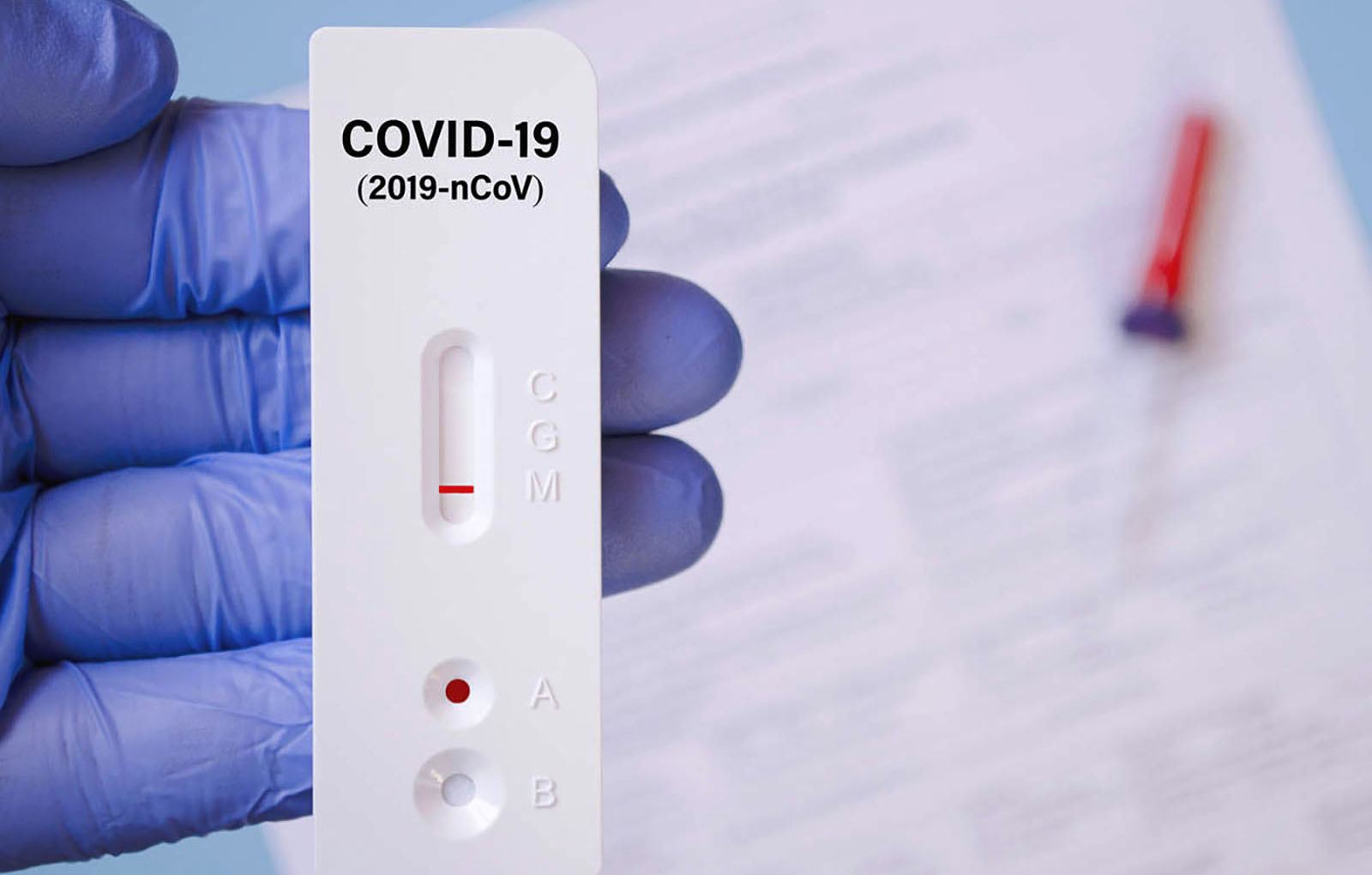BHEKISISA CENTRE FOR HEALTH JOURNALISM
What the latest Covid stats can tell us – and what they can’t

Covid-19 figures have never captured the full extent of the pandemic, but such numbers are becoming even less useful since fewer people are testing.
If we go by the sheer number of new, laboratory-confirmed SARS-CoV-2 infections, and use the formula the Ministerial Advisory Committee (MAC) did in previous surges to calculate if a new Covid-19 wave had started, South Africa moved into a fifth wave on 7 May.
But not all scientists agree that we’re in a fifth wave per se – or that it matters that much.
The MAC formula says that when the seven-day moving average of new cases exceeds 30% of the peak of the previous wave, we’re in a new wave.
The seven-day moving average is when you add up the seven past days of new cases, divide them by seven (so you get the average number of cases) and repeat that calculation for each new day so you can plot all the seven-day averages on a graph. Because there would be a new seven-day average for each day, it’s called a “moving” average.
Scientists use “moving” averages because these knock out big peaks and valleys (days with unusually high or low numbers) that could skew the bigger picture. So, a seven-day moving average gives them the chance to look at averages over a period and get a more representative view of what is happening.

There is ‘tentative promising news’ with the BA.4/BA.5-driven surge flattening out and showing signs of slowing down, says researcher Ridhwaan Suliman. (Photo: hk-lawyer.org/Wikipedia)
The data journalism organisation Media Hack has calculated that the peak of South Africa’s previous (fourth) wave was on 17 December, with 20,791 new infections – 30% of that is 6,237. Therefore, South Africa tipped over that edge on Sunday, 7 May when the seven-day moving average was 6,282 infections, which signalled the start of a new wave.
But, Media Hack reports, only the Northern Cape and Western Cape had seven-day moving averages by 15 May. Although the Free State (13 May), Gauteng (11 May) and KwaZulu-Natal (6 May) had reached this mark in May, their seven-day averages dropped below 30% again by 15 May.
Limpopo, Mpumalanga and North West have not yet entered their fifth waves.
What is driving the current surge?
The Omicron variant, which drove South Africa’s fourth wave, is also driving the current surge in infections, but the present uptick is fuelled by different forms of Omicron than in the fourth wave. In that wave, BA.1 was the main form of the virus circulating in the country. A new form of Omicron, BA.2, then took over and caused a temporary rise in infections when schools opened.
But in mid-January, yet another subvariant, BA.4, was detected in Limpopo, and at the end of February, another, BA.5, in KwaZulu-Natal. BA.4 and BA.5 have since been picked up in all provinces, and in April more than half of the SARS-CoV-2 test result samples that scientists analysed in South Africa came out as BA.4 and BA.5.
Meanwhile, there is “tentative promising news” with the BA.4/BA.5-driven surge flattening out and showing signs of slowing down, researcher Ridhwaan Suliman reports, with the average proportion of Covid tests coming out positive now standing at a “steady 24%”.
The numbers say we’re in a fifth wave, but are we?
The question now, National Institute of Communicable Diseases (NICD) scientists say, is: are the formulas we used to calculate if previous waves had started still relevant and can we trust the results?
The short answer on both accounts, according to the head of the NICD’s division of public health surveillance and response, Michelle Groome, is: probably not.

According to epidemiologist Salim Abdool Karim, fewer people are choosing to test for Covid since they may not realise they’re ill. ‘The vast majority of infections in South Africa are either asymptomatic or mildly symptomatic.’ (Photo: CAPRISA)
First, testing patterns have changed, which makes it hard to reliably compare the current testing data to the testing numbers from previous waves. The NICD’s weekly testing reports show that fewer people are going for tests compared with previous waves. “People who have been vaccinated and/or had Covid no longer seem to be going for Covid testing when they get sick. So, overall, testing rates are low,” says Groome.
Rapid antigen tests, as opposed to PCR tests only, are also now used more widely in South Africa. Because rapid test results don’t need to be analysed in a laboratory, unlike PCR tests, health workers who conduct the tests often fail to report the results to the National Health Laboratory Service, which keeps a record of test results. So, a smaller proportion of the actual test results is reported with the current surge than in previous waves, when PCR tests were mostly the only available test.
According to the epidemiologist Salim Abdool Karim, fewer people are choosing to test for Covid since they may not realise they’re ill. He explains: “The vast majority of infections in South Africa are either asymptomatic or mildly symptomatic.”
With no new variant (each previous wave was driven by a new variant) and because cases during the country’s interwave period between the fourth and fifth waves never returned to the low levels we saw between other waves, “we could technically even argue that South Africa is still in the fourth wave”, says Groome.
The pace at which new infections, hospital admissions and deaths have been increasing during the current surge is also much slower than the rate at which they increased during the initial Omicron (BA.1) surge.
Which Covid numbers are now meaningful?
Moreover, says Groome, case numbers have become less meaningful – using them to calculate a wave, even less so: “Severe outcomes like hospitalisations and deaths are better metrics to use now that we have seen the decoupling of cases and severe outcomes.”
Decoupling means that a smaller proportion of new cases now fall very ill with Covid or die of the disease than in pre-Omicron waves. A Nature study published in April, for example, found people infected with Omicron have a two- to fivefold lower risk of dying than people infected with the Delta variant. Studies show this is because of a combination of changes in the SARS-CoV-2 virus that makes Omicron less able to spread to the lungs, and, most importantly, increased immunity from vaccination and previous infection.

Testing patterns have changed, which makes it hard to reliably compare the current testing data to the testing numbers from previous waves. (Photo: ©Chris Collingridge)
So, what we want to keep track of now is whether – and when – new infections will put a strain on our health system because of hospital admissions, rather than how many new Covid cases we have.
“The purpose of calculating the beginning and end of previous waves with case numbers was to adjust public health measures [lockdown policies such as curfews, liquor sales bans and the closing down of schools] accordingly,” explains Groome. “But increases in cases alone will no longer lead to public health interventions, so we now need to redefine what we consider to be a wave and how we act on that information.”
If Covid now kills smaller proportions of infected people, why still bother with it?
Some people argue: what’s the point of trying to prevent new infections if everyone’s going to get infected anyway? They say: let’s let the virus spread and do little or nothing about it.
But, 9,557 people in South Africa died from Covid-19 between 1 January and 15 May 2022 (almost all cases were Omicron infections) – and these are only the reported cases. The South African Medical Research Council (SAMRC) estimates that at least 85% of excess deaths in the country can also be attributed to Covid.
Excess deaths is a figure that tells researchers how many more people died in a certain period of time than those expected.
This figure includes the health department’s Covid death count, and the extra unexpected deaths reported to Home Affairs’ population register. The SAMRC uses the date the person died, not when the death was officially recorded. They also balance the figures to account for those who may not end up on the register or who don’t have a South African ID number.
Since the start of the pandemic, the SAMRC and University of Cape Town researchers tallied 311,066 excess deaths. The researchers estimate that between 85% and 95% of excess deaths is likely the real Covid death count (so between 264,000 and 295,512).
Compare just the official death count so far this year with other respiratory infections such as the flu. According to the NICD, flu kills between 6,000 and 11,000 people per year in the country. Covid caused 62,258 reported deaths in 2021 — more than five times higher than flu deaths (when using the upper range of flu casualties). Say the flu only causes 6,000 deaths in a year, Covid deaths were still 10 times more than flu deaths in 2021 (during 2021, both the Delta and Omicron variants were in circulation).
New Covid treatments are becoming available to lower the chance of severe disease and death in infected people – but they are expensive and, for now, mostly only available in high-income countries. In the absence of these treatments, the best ways to reduce the risk of falling very ill with Covid is to either not get infected or to develop immunity from getting vaccinated, naturally infected, or both.
But dying or being admitted to hospital are not the only Covid-related risks – research shows Covid can cause long-term heart (cardiovascular), brain (neurological) or hormonal (endocrine) effects.
Scientists in the UK took scans of people’s brains before and after they were infected with SARS-CoV-2, with alarming results. People who caught the bug showed signs of damage in a number of regions of the brain, including sections that play a role in memory and smell. This was true even for people who had mild forms of Covid.

Rapid antigen tests, as opposed to PCR tests only, are also now used more widely in South Africa. Rapid test results don’t need to be analysed in a laboratory, unlike PCR tests. (Photo: economictimes.iniatimes.com/Wikipedia)
Says Abdool Karim: “We should be trying to prevent and/or slow the spread of infection as every person who does not get infected is saved from the risk of not only acute infection consequences, but its many long-term consequences.”
One of the longer-term consequences is long Covid, which international studies have shown could affect between 25% and 35% of people who were infected with SARS-CoV-2.
The illness has a list of more than 50 debilitating symptoms such as persistent headaches, fatigue, hair loss, shortness of breath and attention disorder, which can show up months after someone has recovered from SARS-CoV-2 infection. That’s the case even if the person was infected but didn’t show any symptoms.
Recent studies have shown that even people who had no visible symptoms when they were infected can develop long Covid.
Most people with long Covid just don’t recover after they get sick initially, says Resia Pretorius, the head of Stellenbosch University’s Department of Physiology. “Instead, their symptoms ebb and flow, but never fully disappear.” DM/MC
CORRECTION: Updated on 18 May 2022 at 6.18pm
A previous version of this story added the health department’s death count to excess deaths, which resulted in a double count since the SAMRC’s statistics already account for officially reported figures. A paragraph was added to explain how excess death is calculated.
This story was produced by the Bhekisisa Centre for Health Journalism. Sign up for the newsletter.

[hearken id=”daily-maverick/9472″]
"Information pertaining to Covid-19, vaccines, how to control the spread of the virus and potential treatments is ever-changing. Under the South African Disaster Management Act Regulation 11(5)(c) it is prohibited to publish information through any medium with the intention to deceive people on government measures to address COVID-19. We are therefore disabling the comment section on this article in order to protect both the commenting member and ourselves from potential liability. Should you have additional information that you think we should know, please email [email protected]"



 Become an Insider
Become an Insider